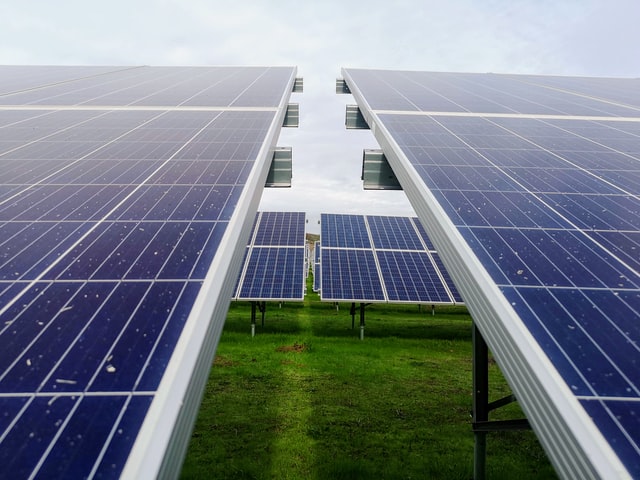Solar prospects rise in MISO utility resource plans –
Solar prospects rise in MISO utility resource plans –
Solar energy is figuring prominently in MISO utilities’ integrated resource plans. Recent announcements from MISO north region utility – Xcel Energy, and south region utility – Lafayette Utilities — show that both are considering utility-scale and distributed solar in meeting their future capacity needs. This solar capacity need is good news for solar developers. However, MISO utilities need to do more in accelerating fossil-based resource retirements towards distributed solar and virtual power plants.
MISO region
MISO has a four-hour capacity qualification for resources to participate in the voluntary capacity auction. In a real capacity market sense, MISO’s capacity auction only makes news when the price settles higher than expected, as seen recently in Michigan.
MISO North region comprising of Minnesota, Wisconsin, and Iowa are the leading renewable states. But that technology leadership is changing from predominantly wind to solar. And MISO has more experience with wind operations than solar, which impacts MISO’s capacity credit calculation for solar. So far, MISO assigned 50% capacity credit to solar, but starting this year, MISO will start calculating Effective Load Carrying Capability (ELCC) for solar for 2021-22 planning year.
Integrated Resource Planning (IRP) process
IRP is a significant undertaking for vertically integrated states in the MISO footprint. MISO utilities point to resources in state-approved IRPs to meet MISO’s planning reserve margin requirements. Even though the Organization of MISO States (OMS) and MISO conduct a 5 year out resource survey on an annual basis, future capacity needs are thoroughly vetted only in the IRPs.
Each state sets its own IRP process in terms of timing and frequency. Mostly Investor Owned Utilities (IOUs) are required to file their resource plans. Given the current COVID-19 crisis, Xcel Energy filed its IRP without providing additional plans to comply with a recent Minnesota Public Utility Commission (PUC) request to bring forward plans for economic growth in the state.
MISO interconnection challenges
Both Xcel and Lafayette Utilities System (LUS) mention the current generator interconnection challenges at MISO. In the case of LUS, the IRP consultant made a clear case for 50 MW solar per year for five years. This total of 250 MW solar as a capacity need is a real opportunity. Since LUS is smaller than Xcel, it likely has limited bonding and related financing capabilities. But solar developers should note that LUS is looking for Power Purchase Agreements (PPA) to sign right now.
Due to MISO interconnection challenges, Xcel’s IRP increased interconnection costs from $140 per kW to $200 per kW.
The wind is in the rearview mirror
Hardly mentioned in the LUS IRP analysis is wind energy.
But almost 4,200 MW of wind is in the Xcel IRP, out of which 1,500 MW of capacity is currently under development. This wind capacity is small compared to the planned addition of 3,500 MW utility-scale solar by 2030, showing Xcel’s shift from wind to solar. Xcel plans to solicit proposals for 450 MW of solar at its Sherburne County (Sherco) coal-fired plant, in response to MN PUC economic recovery docket. In addition to the 3,500 MW utility-scale solar and 450 MW at Sherco, Xcel’s resource plan adds 600 MW of distributed solar.
Coal retirements are straight ahead
Additional opportunities for renewables, including solar and energy storage, arise if state regulators and utilities jump on capacity need that will be created by coal retirements. LUS IRP analysis shows its coal unit – Rodemacher Power Station Unit 2 (RPS2) is not economica. In each of the four pathways studied as part of the resource plan, a total of 250 MW of potential solar PPAs is constant.
Xcel plans to retire all coal by 2030, increasing carbon-free energy from 56% to 75% by 2034. Both Xcel and LUS are training workers in this shift from fossil fuels. Kudos to these utilities, to give credit where it is worth.
The case for distributed solar, and Virtual Power Plants
What is missing from both utility plans is mention of more opportunities for distributed solar and a potential role of Virtual Power Plants (VPPs). A MISO utility in Michigan – Consumers Energy, proposed VPPs in its IRP plans recently. Consumers Energy is banking on VPPs to reduce consumer costs by efficiently reducing energy consumption. Xcel mentions the Detroit Edison (another Michigan utility) IRP when referring to declining ELCC values for solar capacity credit modeling. VPPs can be “bid” into the MISO market as a resource.









